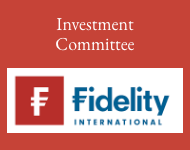Investing in China has always felt like a bit of a poker game – you need strategic thinking, risk management and adaptability to succeed. You’re seldom certain you’ve won and often you have to play the player rather than the cards, says Darius McDermott, managing director of FundCalibre.
The recent policy announcements by the Chinese government seem like an attempt to ‘up the ante’ in a bid to get investors off the sidelines and back into an economy, which has been ailing due to a regulatory crackdown, Covid-zero policy and continued political uncertainty.
The People’s Bank of China (PBOC), along with financial regulators, announced a wide-ranging stimulus package that included interest rate cuts, more liquidity for banks and additional property reforms, as well as funding initiatives for the stock market. The four areas of focus immediately raised hopes of a policy pivot, with the market rising 24% in September alone*, before losing some of those gains.
The big question is can this change shake the gloom?
We’ve seen two small rallies in Chinese equities since 2022 (the final quarter of 2022 as it came out of lockdown, and the second quarter of 2024 on recovery expectations), both times fears about the economic outlook suffocated those rallies.
Poor demographics, a collapsing property market, out-of-control debt and a plethora of low quality companies add credence to the view China is in structural decline – add Trump and the potential for great geopolitical challenges (tariffs etc) and you can see why investors may choose to steer clear.
However, for many the market is still too big to ignore. While less extreme after the recent move, valuations in China remain compelling relative to history and global peers. MSCI China’s forward price to earnings ratio has risen from 9.1x on September 24 to 10.5x, which is broadly in line with the 15-year average (10.8x)** – that is still relatively cheap in a world where many regions appear fully valued.
Any potential recovery is likely to be multi-layered. For example, the troubled property sector needs to be underpinned and is likely to take years to recover. I’d argue the most pressing challenge is to restore the confidence of consumers and entrepreneurs. On the ground, weakening consumption trends have been evident – reflected in weak consumer confidence data and rising savings rates.
The money is there, but so is the fear over the economy. For example, family bank balances have increased 80% from the start of 2020 (the start of the Covid-zero policy). The net increase in household bank accounts is equal to US$9.2 trillion – to put that into context, it is greater than the GDP of Japan in 2023 and the value of China’s pre-Covid 2019 retail sales.
Rowe Price Asian Opportunities manager Jihong Min believes the statements from the government about not wanting property prices to fall further, coupled with the use of the PBOC to help companies buy back shares, and also lend through Repo to get asset managers and insurance companies to buy equities, indicate a 180-degree U-turn on policy.
He says: “The key thing is we talk about the structural issues of China (declining population and the leverage of the household sector being a lot higher than it used to be); those structural factors will not turn around soon, but the main point is people with means to spend are holding back because they are unclear on the future. A big part of that is the fall in property of 20-30% and also a small percentage of the population investing in equities.”
Fidelity China Special Situations trust manager Dale Nicholls agrees, adding that the weak property market is a drag here – so more concerted efforts to address this are an important step towards improved consumer confidence.
He says: “Recently announced regional coupon programmes and subsidies (in addition to trade-in programmes already underway) are relatively small in scale – the hope is that we see more significant programmes to further support sentiment.”
What type of action is needed?
In a recent note, JPMorgan chief market strategist (APAC) Tai Hui says these good intentions must be followed by actions to prevent another recovery fizzling out. He says that while the consumption coupon has had a short-term boost to spending, a rise in income tax thresholds could bring a more sustained pick-up. He believes the importance of fiscal policy is that the benefit would be more immediate than monetary policy, which needs to work through the system**.
He says: “In the past two years, rate cuts and liquidity injections have yet to boost credit growth or economic activity, due to cautious sentiment by households and the corporate sector. Could the surge in stock prices and the positive wealth effect unlock household savings that could translate into more consumption, or even a more constructive sentiment towards the housing market?”
Matthews Asia China strategist Andy Rothman believes the policy announcement is just a sign of President Xi Jinping abandoning his stubbornness. Although more needs to be done, it appears he has finally acknowledged the steady decline in economic activity, particularly in real estate. He adds that the Fed’s recent rate cut also gives Xi more room to further relax monetary policy, with history showing both consumers and entrepreneurs have been historically resilient.
How have fund managers reacted?
Nicholls says he has been adding to the consumer sector – citing the particularly strong sell-off in defensive consumer staples; he says sell-offs in structural growth stories in the consumer discretionary space, such as sportswear and household appliances, also created opportunities, with both set to benefit from any improvement in consumer sentiment****.
Names he has added to include auto maintenance company Tuhu, which is set to benefit from the increasing number of vehicles needing maintenance, and Ping An insurance****.
Min says the policy move has prompted him to move from a 3% underweight to a neutral position in China, with the intention to buy further dips from this point. He has been adding to names like online property agency Beike (KE Holdings), insurance business Ping An and mall management company Mixc – all of which have a property element to their business^.
JPMorgan China Growth & Income manager Rebecca Jiang says her portfolio was tilted towards macro-sensitive sectors, such as consumer-facing businesses, prior to the pivot. She says: “The pivot has resulted in significant volatility in the past couple of months and we have used that to take profit in some of the cyclical names, such as the property sector, where we have a large overweight and stocks have risen sharply.”
It is clear the stimulus has made an impact but more needs to be done. Solving the structural challenges facing the property sector will take a couple of years at least, but underpinning it will give consumers confidence to spend again, and this may unlock a lot of opportunity in what is still a relatively cheap market. There are certain things the Chinese government does not have full control over (such as tariffs), but the move to tackle the internal issues should hopefully give any recovery more impetus.
In addition to the single-country China funds already mentioned, those who may prefer a more diversified approach might consider the FSSA Asia Focus or the Invesco Asian funds, which have 26% and 27% invested in Chinese companies respectively^^.
*Source: Lazard, Outlook on Emerging Markets, October 2024
**Source: JPMorgan Asset Management, 7 October 2024
***Source: Matthews Asia, 7 October 2024
****Source: Fidelity International, 24 October 2024
^Source: T. Rowe Price, November 2024
^Source: fund factsheet, 31 October 2024
Past performance is not a reliable guide to future returns. You may not get back the amount originally invested, and tax rules can change over time. Darius’s views are his own and do not constitute financial advice.
Main image: li-yang-5h_dMuX_7RE-unsplash






























